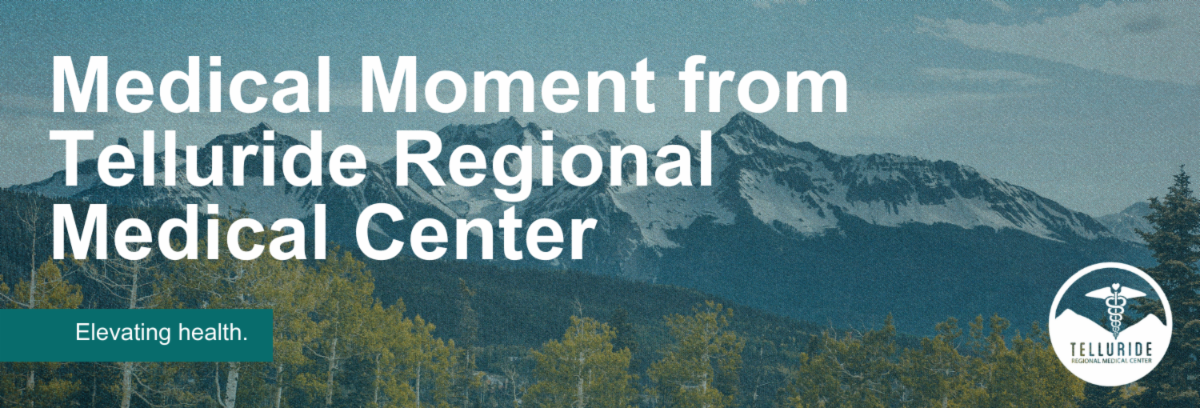
06 Jul Telluride Med Center: How to Maintain Healthy Skin at High Altitude, Library, 7/9!
The Telluride Regional Medical Center (TMRC) hosts “Keep Your Skin Healthy at High Altitude this Summer.”
To learn more, join Dr. Sharon Grundy (Telluride Regional Medical Center); Dr. Scott Wickless (Epiphany Dermatology); and Dr. Megan Mahoney (Pearl Aesthetic Medicine). Their talk takes place Wednesday, July 9, 5:30pm at the Wilkinson Public Library.
Scroll down for more about the talk from the TMRC
For more general information about Telluride Regional Medical Center, please visit tellmed.org.
Go here for lots more history about the Telluride Medical Center (dating back to 2009).

Overexposure to the sun and UV rays is the leading cause of skin cancer and, in a high-altitude town like Telluride, protecting your skin is especially important. Staying safe under the unfiltered sun is vital when you plan to spend any amount of time outdoors.
Sun exposure accounts for 80–90% of visible aging and there is no such thing as a safe UV ray. One type of UV ray, UVA rays, often dubbed “aging rays,” contribute to premature wrinkles, sagging, and rough skin by breaking down collagen and elastin.
Using sunscreen daily helps protect against fine lines, dark spots, loss of elasticity, and long-term skin damage.
There are also UVB rays, known as “burning rays,” which are the primary cause of sunburn, hyperpigmentation, and skin cancer.
At higher elevations, like in Telluride, UV intensity increases by about 10% for every 1,000 meters of elevation gain, meaning the sun in and around Town is about 26% more intense than at sea level. UV levels are strongest between 10 a.m. and 4 p.m., especially in spring and summer. And they can penetrate clouds and reflect off surfaces like snow, water, and pavement, increasing your exposure.
The most effective way to prevent sun damage is by using sunscreen regularly and reapplying consistently. Choose a broad-spectrum sunscreen with an SPF of 30 or higher and reapply it every two hours, more often if you’re sweating or swimming. Don’t forget areas like your neck, ears, and lips.
Zinc oxide sunscreen is widely recommended by dermatologists for its effectiveness and skin compatibility. Unlike chemical sunscreens which absorb into the skin, zinc oxide sits on the surface and deflects rays like a mirror. It’s also less likely to irritate sensitive skin.
Wearing long-sleeved shirts and long pants made from tightly woven fabrics or ones with UPF labels is one of the best ways to protect your skin from long days in the sun. When it comes to the area of the head, wearing sunglasses and a hat, preferably one that is wide brimmed shading your neck up, will help keep you both safe and looking cool.
Children’s skin is especially vulnerable to UV damage. Babies under six months should be kept out of direct sunlight. For older children, hats, sunscreen, and UV-protective clothing are key. Start early to build sun-safe habits that last.
Proactively shielding your skin from UV damage can help reduce your risk of skin cancer and keep your skin healthy and vibrant over time.
Questions about sun safety, skin checks, or choosing sunscreen that’s right for you? Give the Telluride Med Center a call at 970.728.3848 to schedule an appointment.


Sorry, the comment form is closed at this time.